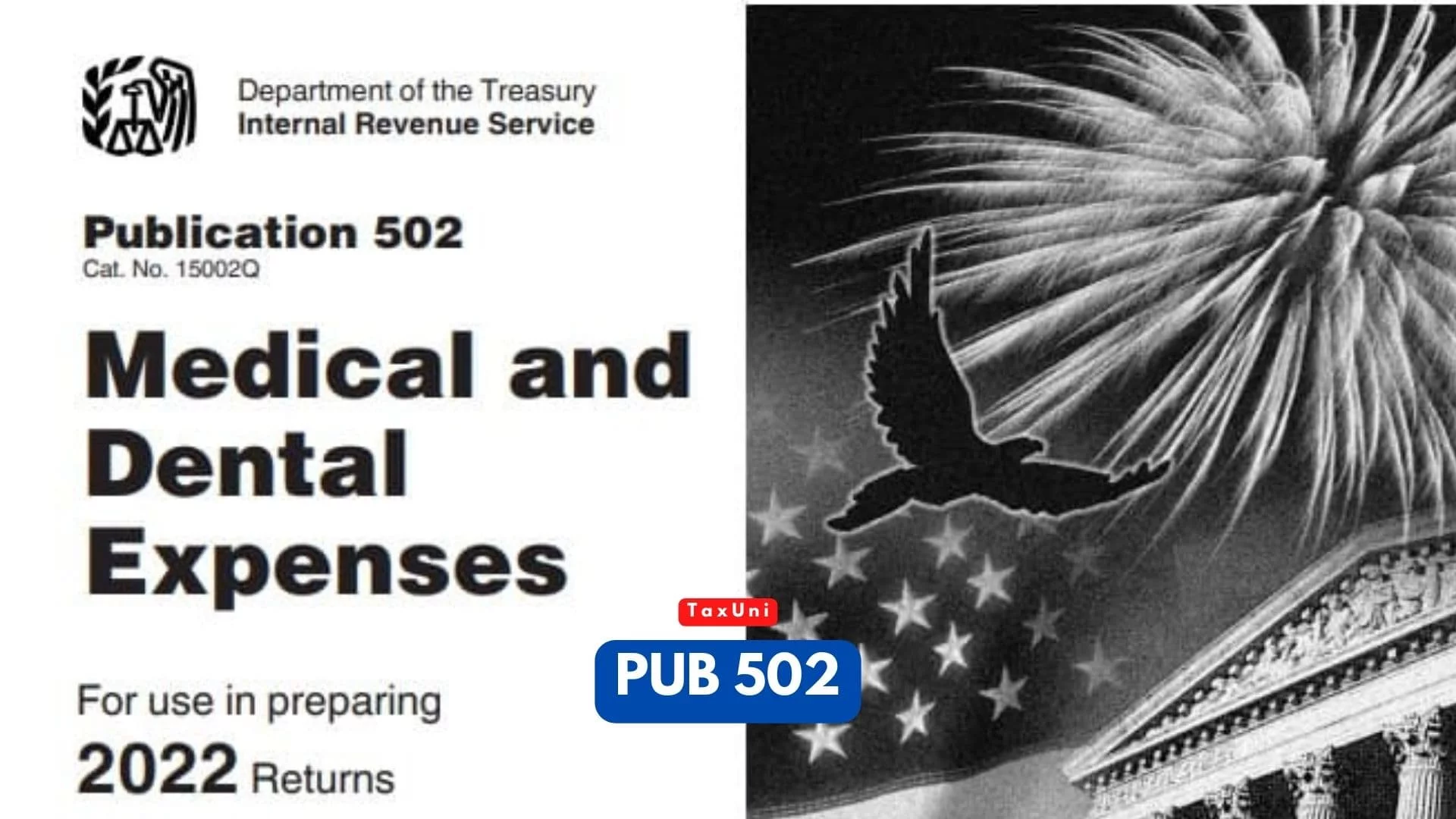Pub 502
IRS Publication 502 ( Pub 502 ) is a helpful resource for taxpayers who want to deduct medical and dental expenses from their income taxes. Read on for further information on what Pub 502 is and what it covers.

Contents
Pub 502 explains what medical and dental expenses qualify as tax deductions and how to figure them on your Schedule A (Form 1040). It also identifies who can claim them. However, it should be used with caution in connection with health flexible spending accounts (health FSAs), health savings accounts (HSAs), or health reimbursement arrangements (HRAs). Because these tax-favored plans reimburse certain expenses, not all items listed in Pub 502 qualify as medical for FSA, HSA, or HRA purposes. Expenses that are considered medical include the costs you pay for treatments that prevent, diagnose, or treat diseases or other physical and mental ailments. These expenses include equipment, diagnostic services, and supplies necessary to service these conditions.
The IRS publishes Publication 502 each year to help taxpayers identify what is deductible under Code SS 213(d). This publication can be used by individuals, employers, and insurance companies when reimbursing or paying expenses incurred under health flexible spending accounts (health FSAs), health savings accounts (HSAs), health reimbursement arrangements (HRAs), or covered on a tax-favored basis under other group health plans.
However, while Publication 502 can be useful for identifying what is reimbursable under these benefits, it should be used sparingly. In particular, many medical expenses included in this publication are not eligible for reimbursement under a health FSA or HSA because the rules for reimbursing them differ from those for figuring the tax deduction under Form 1040. Furthermore, many of this publication’s eligible medical and dental expenses are not related to disease prevention or incentives for healthy eating and exercise behaviors that can help combat serious public health problems such as obesity and diabetes.

What is Publication 502: Medical and Dental Expenses?
The IRS recently released an updated version of Publication 502, Medical and Dental Expenses, to be used by taxpayers filing their 2019 tax returns. The publication explains how to claim an itemized deduction for certain medical and dental expenses. It also identifies what expenses can be included and who can include them.
The publication defines medical and dental expenses as the costs you pay to receive treatments that prevent, diagnose, or treat diseases or other physical and mental ailments. These expenses also include equipment, diagnostic services, and supplies necessary to service these conditions.
However, some items are not considered medical expenses under the IRS definition. Examples include:
- Elective or cosmetic surgeries.
- Teeth whitening.
- Procedures intended to change your body’s shape (e.g., breast augmentation).
The amount you can deduct for medical and dental expenses is limited to 7.5% of your adjusted gross income. This limit applies to both single and married filing jointly. It is calculated using a standard calculation that considers the amount of your employer-provided health insurance and any other coverage you might have. You can also include qualified insurance premiums you pay for yourself, your spouse, and any dependents.

What is a Qualified Medical Expense?
A qualified medical expense is an itemized deduction that can be taken against your income tax liability on your federal tax return. Generally, these expenses are costs of health care services that prevent, diagnose, treat, or mitigate disease or other physical or mental ailments. They also include equipment and supplies necessary for this purpose.
Publication 502 provides helpful guidance on what qualifies as a medical expense under Code SS 213(d), which helps identify the expenses that may be reimbursed or paid by health Flexible Spending Accounts (FSAs), Health Savings Accounts (HSAs), or Health Reimbursement Arrangements (HRAs).
A number of qualified items qualify for reimbursement, including medical conferences and nursing home care if you are in the facility for receiving medical services. Fees for a human guide dog to assist a blind person to get around, for example, are also reimbursable.

What is a Qualified Dental Expense?
Generally, dental expenses that prevent or alleviate disease are eligible for tax deductions. This includes treatments such as teeth cleaning, sealants, and fluoride treatments. X-rays, fillings, and root canals are also allowable.
However, dental procedures that are purely cosmetic, such as tooth whitening, are not allowed for tax deductions. Therefore, patients should be careful about what they spend on their dental treatments.
Individuals should consult a qualified accountant or other tax professionals to determine whether a particular expense is deductible. In addition, they should be able to provide receipts or records that support the claims made on their tax return.
One way to be sure you’re only spending HSA or FSA funds on qualifying expenses is to ask your dentist for a letter of medical necessity. This can help you avoid paying taxes on nonqualified expenditures.
The IRS defines medical and dental expenses as the costs you pay to receive treatments that prevent, diagnose, or treat diseases or other physical and mental ailments. These costs are usually deductible when they exceed 7.5% of your adjusted gross income.





